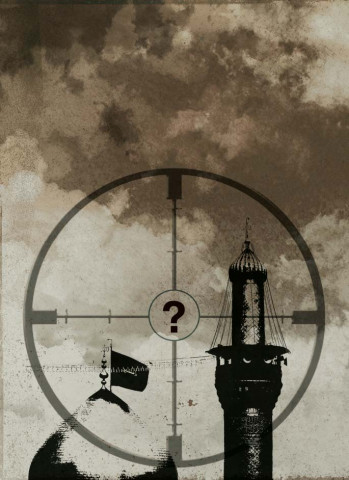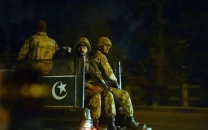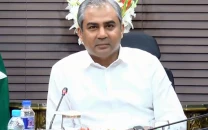Targeting symbols of spirituality
While religious differences have always existed, there is no longer any space for dialogue.

Targeting symbols of spirituality
A few weeks after the operation, militants started avenging those killed in the seminary.
On July 31, 2007, around 200 militants took control of Haji Baba Turangzai’s shrine in Safi tehsil in Mohmand Agency, renamed it Lal Masjid and established their own brand of Shariah courts in the area.
Tehreek-e-Taliban Pakistan (TTP) leader Omar Khalid announced: “We will continue Ghazi Abdur Rashid’s mission even if it means sacrificing our lives.”
Three years later, shrines remain susceptible targets. As recently as September 20, Akhun Salak Baba’s shrine on the outskirts of Peshawar was blown up. Over 40 people died in July in suicide attacks on Data Darbar in Lahore.
Security analyst Imtiaz Gul says that attacks on shrines are a result of the al Qaeda and TTP alliance in 2007. “This is done by people who believe in Osama bin Laden’s philosophy, [who subscribes to] the Salafi/Wahabi school of thought that rejects shrines.”
Their goal is to “demonstrate their rejection of shrines and to discourage people from visiting them.” There is another group too, however, Gul points out. These “are local criminal groups disguised as the Taliban and foreign vested interests whose aim is to destabilise Pakistan.”
Attacks on shrines are usually believed to be a result of differences among schools of Islamic thought. While Deobandis, Salafis, Ahle Hadiths and Panjpiris do not believe in shrines, Barelvis consider saints to be “their go-between to communicate with God,” says historian Mubarak Ali.
However, differences in religious point of views have always existed without translating into violence. Ali feels this is because, “at the present time, there is no space in our society for debate.”
When the Taliban took over Buner in April 2009, they first besieged Pir Baba’s shrine. Taliban leader Fateh Khan said it was because the place was a hub of “adultery and idolatry”. When the military launched a surgical strike the walls of the shrines were covered with chalkings of Jumaat Tauheed-o-Sunnah.
In Khyber Agency, Lashkar-e-Islam (LI) – which follows the Deobandi and Panjpiri creeds – is the main group involved in blowing up shrines and schools. Almost all attacks on shrines in Khyber Agency and Peshawar have been claimed by the LI. Its leader Mangal Bagh has openly vowed to carry out these attacks.
However, while a high-ranking member of the Panjpir school of thought admits that their “aim is to eradicate bidaat (excess in religion),” but he says that they do not target innocent people.
“We think that suicide attacks on shrines are actually a plan to defame Islam by Islam,” says a spokesperson for Jamaat-ud-Dawa, which follows the Ahle Hadith school of thought.
Despite heavy contingents of police at shrines – 6,500 personnel were deployed at Lal Shahbaz Qalandar’s urs this year – it is a near-impossible task to secure them. Shrines are frequented by thousands daily, provide food and are cultural symbols. Even though suicide attacks have been condemned by Deobandi and Barelvi scholars, the policemen standing guard are a sign of the ever-present threat and fear at these symbols of spirituality.
Published in The Express Tribune, September 25th, 2010.



















COMMENTS
Comments are moderated and generally will be posted if they are on-topic and not abusive.
For more information, please see our Comments FAQ